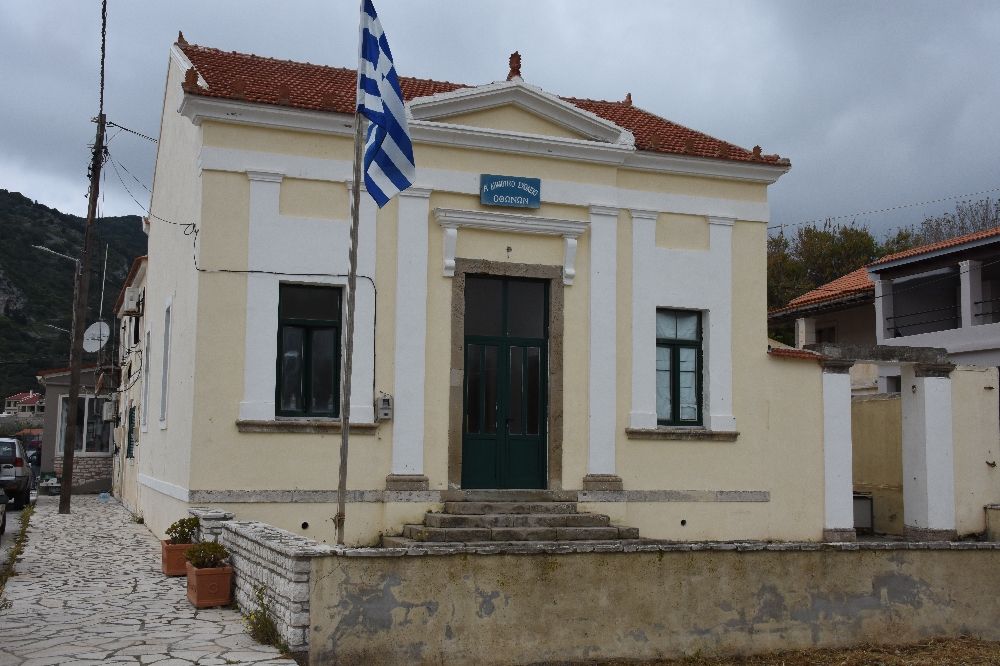In Othoni
The route
Othoni, provides a dense network of paths of all kinds, paved, cobbled streets, concrete, earthy, etc., which leads to all of the parts of the island and the beaches. In combination with the low traffic, their rich nature and the low altitudes, it is an ideal place for hiking. Therefore, each walker can configure his own route as he wishes. In this sense, the presented route is indicative.
The route starts from the coastal road of Ammos, which turns north - northwest, where after about 150 meters the path that leads us to Stavros begins. The trail is gently uphill in a lush environment, easily visible and there are informative wooden signs.
Going uphill, we see the view from the whole island, while on our right hand is the area of Argyratika, not long after Pagalatika. Shortly after we meet the road, which we follow for about 90 meters, we find the path again where Stavros is less than 500 meters away. From Stavros, if we wish, we proceed towards Daphne and/or Chorio, otherwise we head east along the road to Damaskatika. Following the quiet road we will meet a junction on our left hand towards the beautiful beach of Fiki (the beach is about 1,500 meters from the junction and the way back is somehow uphill - altitude difference of 150 meters).
From Damaskatika, we descend south towards Ammos and the port. The path is actually a narrow concrete road that is mostly downhill. The walker will encounter several intersections before reaching the beach, so following the route requires attention.
The island has a Regional Medical office and a Police Station.
Othoni
Othoni is located at the westernmost point of the country. It is the largest of the Diapontic Islands, located north of Corfu and belonging to the Ionian Islands Region. It has 393 inhabitants (2011) and it is divided into 2 areas (Ano and Kato Panda).
The first name of the island according to ancient texts (Hesychius, 3rd century BC) was Othronos. It was also called Fidonisi, because of the many snakes it had, and Phanos, because of its lighthouse. According to mythology, in ancient times it was Ogygia, the island of the nymph Calypso. Odysseus fell in love with her and stayed with her for seven years.
The island was conquered by the Franks (in the 11th century) and the Venetians (in the 12th century), while, at the same time, it was often attacked by pirates. In 1537, the famous pirate Hayreddin Barbarossa massacred the island's inhabitants. According to tradition, the event is commemorated by the white stone cross of 1833 on the Kalodiki hill. In 1815, the English conquered the Othonians. With the treaty signed in 1864, the Ionian Islands - and with them the Diapontia Islands - passed permanently to Greek sovereignty.
In the west of the island, near the beach of Aspri Ammos (access is available only through private boats), there is the Cave of Kalypso, 100m long, 10m wide and 20m high and the old churches of Agia Triada (late 17th century), Panagia (17th century), Agios Georgios and Agia Paraskevi. At the northeastern edge, at cape Kastri, at the top of the hill at an altitude of 100m, near the ruins of the venetian fortress, there is the lighthouse of the island. It was built in 1872, it is 13m high and it is the first lighthouse that those sailing from the north to the Ionian Sea encounter.
The main occupations of the current inhabitants are tourism, fishing and olive oil production. The island is full of olive trees which produce the olive oil, with a high content of high quality oil. Most of them are over 300-400 years old and more than seven metres high. There are also cypress trees on almost all the mountain slopes and many fruit trees. The tall mulberry (or Skamnia) and fig (or Skeria) trees are found in almost all the districts and gardens. Oregano, sage and many other herbs thrive. There are also several rabbits and wild rabbits. The common form of reptile is a kind of viper.
Othoni is one of the first stations of migratory birds in southeastern Europe from Libya, especially of warblers. Among marine mammals: the bottlenose dolphin and at least three species of sharks (including the well-known great white shark) have been observed, while occasionally, near the cave of Kalypso, movements of monachus monachus mediterranean monk seal are also observed. The zooplankton in the small bays of the island and especially in Fiki is so abundant that at night, when there is tranquility, it literally illuminates the seabed.
The local festival takes place on 15 August, on the feast of Panagia.
.jpg)
.jpg)
.jpg)
.jpg)
.jpg)
.jpg)
.jpg)
.jpg)
.jpg)
.jpg)
.jpg)
.jpg)
.jpg)
.jpg)
.jpg)
.jpg)
.jpg)
.jpg)
.jpg)
.jpg)
.jpg)
.jpg)
.jpg)
.jpg)
.jpg)
.jpg)
.jpg)
.jpg)
.jpg)
.jpg)
.jpg)
.jpg)
.jpg)
.jpg)
.jpg)
.jpg)
.jpg)
.jpg)
.jpg)
.jpg)
.jpg)

.jpg)
.jpg)
.jpg)